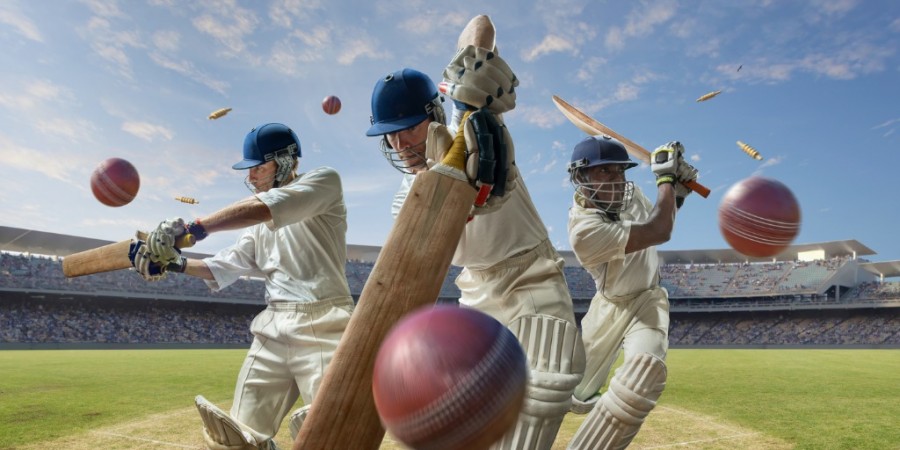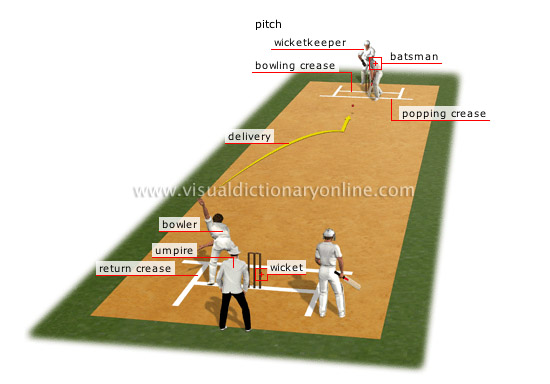Rules of the Game of Cricket
Millions of people love and enjoy the game of cricket all over the world. For this game, you need a mix of tactical, mental, and physical abilities. To play, one must comprehend the guidelines and rules of the game. Cricket’s rules may at first seem complicated, but once you grasp them, the game becomes more enjoyable.
The history of cricket is extensive and fascinating, going all the way back to the 16th century. In order to ensure fair play and preserve the sport’s integrity, the rules have changed over time. The rules cover a wide range of game-related subjects, such as the tools used, the fielding positions, and the methods for ejecting players.
We’ll delve into the specifics of cricket’s rules, starting with the basics like the game’s objective and its various formats before moving on to the finer points of specific matches. We’ll also examine the different fielding and bowling tactics that can be used to dismiss a batsman. You will be totally familiar with the cricket regulations by the end of this article, and you’ll be prepared to take advantage of the chance to take part in the game and fully benefit from the sport.

The Basics of Cricket
Cricket, a bat-and-ball sport played for centuries, is incredibly well-liked throughout the world but is particularly so in India. Two teams, each with eleven players overall, compete in the game.
Play takes place on a rectangular or circular cricket field. The 22-yard-long rectangular area in the middle of the field is the pitch, which is typically made of grass. The pitch is where most of the action happens because this is where the bowler bowls and the batter tries to hit the ball.
Each cricket game has two innings in which both teams have the opportunity to bowl and bat. A coin toss determines who gets to go first in the order of bowling or batting. The team that bats first establishes the target score, which the opposing team must beat to win the match. The team that bats second tries to overtake the opposition and score more runs than it does in order to win.
Every over in the comparison has a total of six deliveries. A delivery is the name for the ball that the bowler throws at the batsman. The bowler has a variety of bowling styles to pick from, including fast, medium, and spin. The batsman must drive the ball as far as he can in order to score runs.
In cricket, a player must either hit the ball over the boundary or between the wickets to score runs. When the ball crosses the boundary line in the air, a six is scored; if the ball bounces once before doing so, a four is scored. In cricket, teams strive to score runs while also taking wickets. This can be accomplished by a bowler bowling a ball that strikes the stumps and removes the bails or by a fielder catching the ball after the batsman has hit it but before it touches the ground. After getting ten wickets, the team’s inning comes to an end.
A set of regulations that address equipment, umpiring, and fair play govern the sport of cricket. Each participant is required to wear protective equipment, which includes a box, gloves, pads, and a helmet. The game’s umpires are in charge of calling different plays, including run-outs, wides, and no-balls, and enforcing the regulations.
Playing the Game

Understanding the rules is necessary in order to play cricket. The goal of each team’s bowling and batting options is to increase their total run total over the opposition.
The team that wins the coin toss in a cricket match chooses whether to begin batting or bowling. The team that elects to bat first is referred to as the “batting side,” while the team that elects to field is referred to as the “opposing side.”
As two batsmen from the batting side simultaneously enter the field, the fielding side’s bowler bowls the ball to the batting player. The bowler’s goal is to knock down the wickets, which are three wooden poles that are placed behind the player. The batsman’s goal is to hit the ball as far and safely as possible to score runs.
The batsman has many options for accumulating runs. The most common tactic is to bat the ball, move to the other end of the pitch (a rectangle in the middle of the field), and repeat. If they cross the crease, a white line that designates the conclusion of the pitch, and make it to the other end of the field before the ball is returned, they score one run.
Without the ball ever touching the ground, the batsman can also score runs by smacking it over the boundary rope. When the ball bounces before crossing the boundary rope, a four is created, while a six is created when it crosses on the full. In both cases, the batter scores four or six runs.
When catching the ball and hitting the stumps before the batsman can get all the way to the other end’s crease, the fielding team in cricket can declare a dismissal. There are numerous other ways to dismiss a batsman besides being bowled, caught, or run out.
Ten of the eleven batsmen on the batting side must be out before the innings is declared over and the teams are switched. The batting side is no longer the fielding side, and the reverse is true. The winning team is determined by the final score.
The Rules
Cricket, a popular sport in India, has regulations that must be followed in order to ensure fair play. By following these guidelines, you can make sure that the game is performed fairly and that each player has an equal chance of winning. In this essay, the rules of Indian cricket will be explored in great detail.
- The Players
Cricket is a team sport with eleven players on each team. Bowlers and batsmen are the two types of athletes. Which team gets to field and bat first is determined by which team flips the coin.
- The Pitch
A rectangular area of ground measuring 22 yards long by 10 feet wide serves as the cricket pitch. The right side and the crease are the two areas of the pitch. The wicket is made up of three stumps and two bails.
- The Umpires
Making sure the game is fairly played is the responsibility of the umpires. The final decisions on the field are made by two on-field umpires. They serve as a point of reference for the third umpire, who is only called upon in disputed circumstances.
- The Ball
The weight of a cricket ball, which is made of leather and cork, ranges from 155.9 to 163 grams. The ball’s circumference needs to be between 8.81 and 9 inches.
- The Bat
Wooden cricket bats are limited to 38 inches in length and 4.25 inches in width.
- Scoring Runs
The game’s primary objective is running. A run is scored when a batsman hits the ball and runs to the opposite end of the field. If the ball crosses the line at the boundary, four runs are scored. If the ball crosses the line at the boundary, six runs are scored.
- Dismissals
The goal of the fielding team is to eliminate the battery from the game. There are numerous ways to get rid of a batsman, including:
- The ball is “bowled” when the batsman fails to deflect it with his body or bat as it strikes the stumps and rips the bails off.
- A fielder is said to have “caught” the ball if they do so after the batsman strikes it but before it touches the ground.
- If the fielder bowls the ball and strikes the wicket before the batsman reaches the crease, he is declared run out.
- A batsman is deemed to be stumped if he leaves his crease to chase a ball, misses it, and the wicketkeeper removes the bails before he can get back to his crease.
- Leg before wicket (LBW): When the umpire determines that the batsman’s leg prevented the ball from striking the stumps.
- Overs
The game is played in overs, and each over consists of six balls. The bowler bowls from one end of the field while the batsman tries to score as many runs as he can before the bowler completes the over. At the end of six overs, the bowler from the opposing end of the pitch begins, and so on until the end of the inning.
- Innings
A team bats after a certain number of outs have been recorded in an inning or until they are out. In limited-overs cricket, each team is allotted a set number of overs to bat, typically 20 or 50. In tests, there are no over count limitations and teams are free to bat for however many overs they have left over batsmen.
Conclusion
In conclusion, cricket, a well-liked sport in India, is watched by millions of people all over the world. To enjoy a game fully, players, officials, and spectators must all be familiar with its rules. Cricket’s vast and convoluted regulations give the game structure and fairness.
Cricket’s credibility hinges on players upholding the game’s rules and spirit. Officials are required to ensure that the law is applied fairly and consistently. Understanding the rules of the game can be helpful for spectators as well, as it improves their ability to follow the action and their enjoyment of it.
Since its inception until the present, cricket has undergone significant change. To reflect how the sport is constantly changing, the rules have been altered. Maintaining the game’s morals and traditions is essential, as is accepting the alterations that will inevitably take place as it gains popularity both at home and abroad.
The cricket rules are an essential component of the game, providing structure, fairness, and enjoyment to both players and spectators. To be a cricket enthusiast and fully enjoy the game, one must understand and appreciate these rules.
